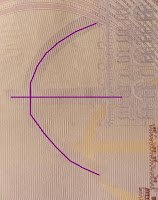After the dissolution of the former USSR, various states became independent. One of them was Azerbaijan.
To most people, Azerbaijan was not that known, until Ell and Nikki won the Eurovision Song Contest in 2011. The whole festival moved to Baku the next year, and so a lot of people saw images of the most eastern of all europan countries. Nearly 90% of Azerbaijan's economy is based on the export of all kinds of oil products.
Azerbaijan is also known for the disputed area of Nagorno-Karabach, an area with an Armenian majority.
This region has been subject to several wars, where some degree of independency was given and taken from the Armenian people living there. Currently Nagorno-Karabach is recognized as Azerbaijan territory.
Strangely enough, the country exists out of two parts, and the smaller part in the south west, is acualy and enclave of Azerbaijani people in the country of Armenia.
 |
Map of Azerbaijan
|
Looking at the Azerbaijani flag, we see a star and a crescent.
These symbols can also be found on the flag of Turkey, neighbour of Azerbaijan.
This is no coincidence, as Azerbaijani is also a Turkic language, and also spoken in Türkiye.
Arabic, Latin and Cyrillic writing is used.
 |
Flag of Azerbaijan
|
There are 6 coins in use, 1, 3, 5, 10, 20 and 50
qəpik.
On the reverse side, we find the face value, and a map of Azerbaijan.
 |
| 1, 3, 5, 10, 20 and 50 qəpik |
The value '3' is less common to most of us, but was already used in Russia, and in Cuba.
On the obverse side, we find again the face value, but now with different images.
 |
| 1, 3 and 5 qəpik |
 |
| 10, 20 and 50 qəpik |
The music instrument on the 1 qəpik (kae-pik) coin, returns in the 1 Manat note, the books in the 3 qəpik coin, is repeated in the 5 Manat note.
On the 5 qəpik coin we see a building, this image returns on the 10 Manat note.
The crown on the 10 qəpik coin, also is seen on the 20 Manat note, and the stairs on the 20 qəpik coin can be found again on the 50 Manat note.
The 50 kqəpik coin, is the only bimetallic coin. It illustrates the oil industry in the country.
1 and 3 qəpik coins are rarely used, but still part of the set of coins.
There is no date of issue on any of the coins!
to be continued ...

















































